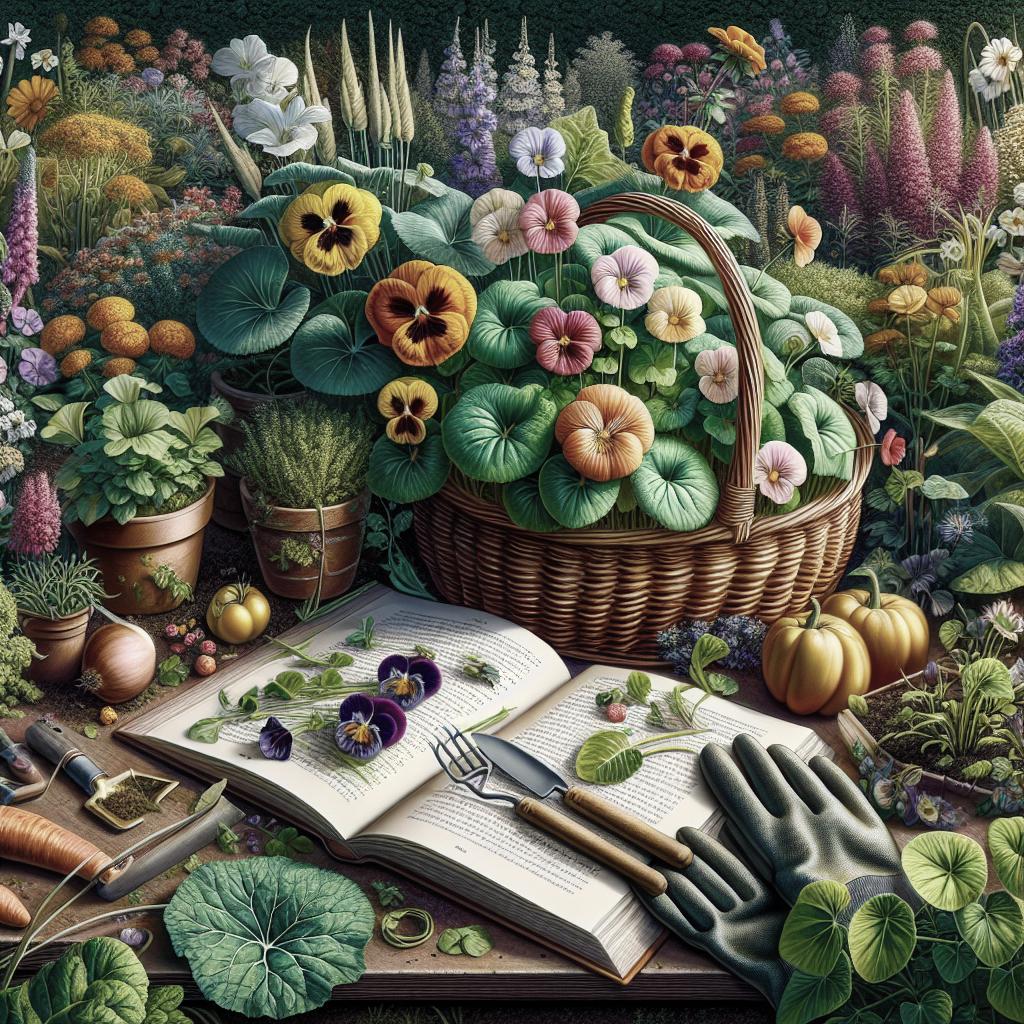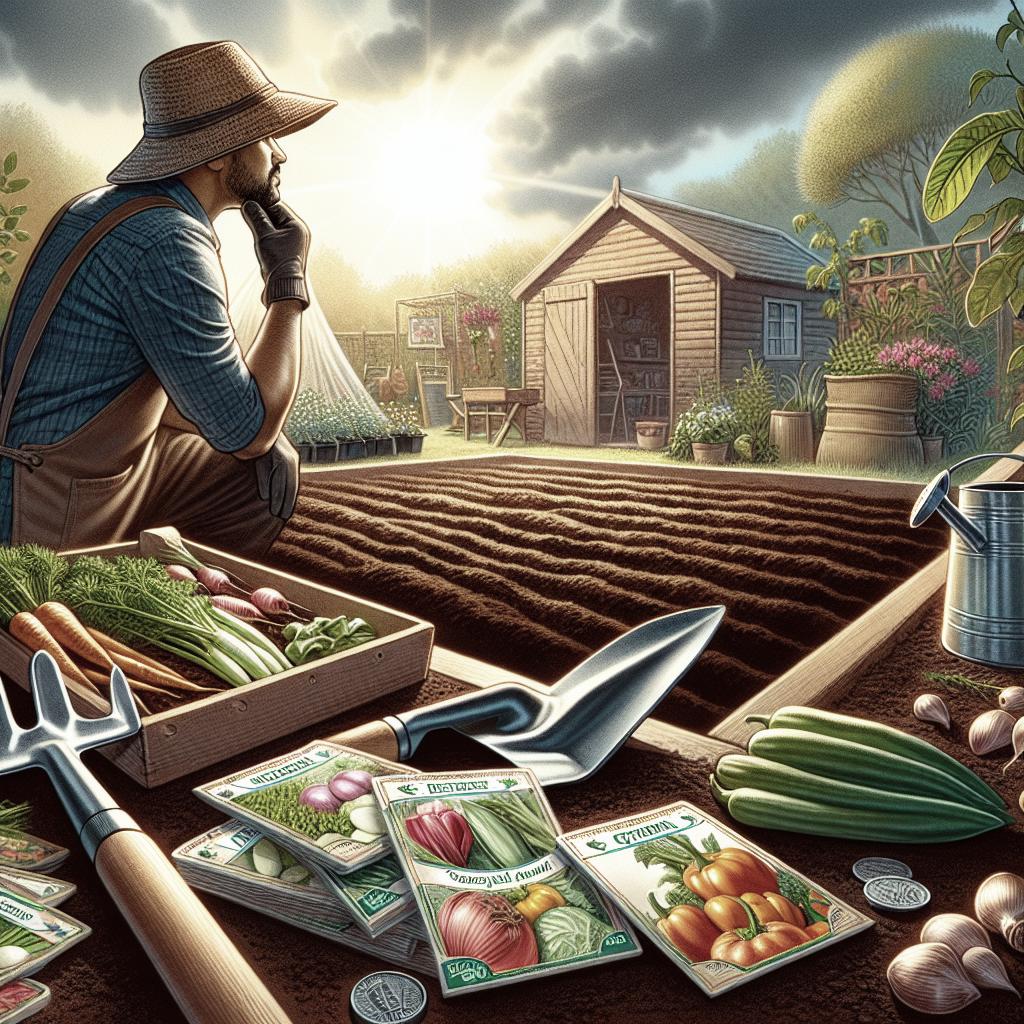“`html
How to Incorporate Edible Flowers into Your Garden
Incorporating edible flowers into your garden is a delightful way to blend horticultural beauty with culinary creativity. Whether you opt to grow them indoors or outdoors, understanding how to cultivate, pick, and prepare these vibrant botanical beauties is key. From garnishing salads to infusing beverages, edible flowers like nasturtiums, pansies, and marigolds present endless possibilities for budding chefs and experienced gardeners alike. As you explore the visual and flavorful delights of edible flowers, this guide will help you every step of the way—from understanding optimal growing conditions to practical culinary applications. Read on to find out how you can transform your garden into a feast for the senses.
Indoors or Out?
The choice between cultivating edible flowers indoors or outdoors depends significantly on your available space, climate, and personal preference. Outdoor gardens offer the advantage of natural sunlight, larger growing spaces, and typically better drainage and pollination opportunities. Plants such as violets, marigolds, and lavender thrive under these conditions and often attract beneficial pollinators like bees and butterflies.
On the other hand, indoor gardening of edible flowers can be just as rewarding. With the use of containers and windowsill planters, you can grow a variety of flowers like nasturtiums and pansies year-round, regardless of the outside weather. Indoor settings allow more control over soil conditions and pest management, ensuring that your blooms remain as pristine as possible. Additionally, the location adds a touch of aesthetic elegance and fragrance to your home space.
How to Pick (and Prep) ’em
The art of picking edible flowers lies in the timing and the approach. Ideally, they should be harvested in the morning just after the dew has dried. This is when they are most hydrated and flavorful. Use scissors or garden shears to cut the flowers gently, preventing damage to the plant and ensuring the flowers remain intact. This practice not only preserves your plant’s health but also guarantees the best tasting blooms for your recipes.
Cleaning Edible Flowers
Proper cleaning of edible flowers is crucial to eliminate dirt and any potential pests. Rinse them gently in a bowl of cold water and pat them dry with a soft cloth or paper towel. This careful handling avoids bruising, which can detract from both the visual appeal and taste. Consider removing the stamens and pistils from larger flowers to prevent the flavor from becoming overly bitter.
Stop and Eat the Roses: How to Incorporate Edible Flowers into Your Cooking
Incorporating edible flowers into your culinary endeavors can transform an ordinary dish into a visual and gustatory feast. Flowers like nasturtiums and pansies can be tossed into salads, adding a spicy or slightly sweet flavor. Their vibrant colors not only garnish but also enhance the aesthetic appeal of your meal.
Tasting Notes
When it comes to flavors, each type of edible flower brings something unique to the table. Lavender adds a subtle perfume and is excellent for infusing creams or syrups. Marigolds, with their citrusy overtones, can brighten up desserts or savory dishes. It’s important to taste test each variety before use to understand how their flavors meld with your planned recipes.
Related News
The growing trend of edible flowers in culinary arts and gardening is often highlighted in top lifestyle and gardening publications. Professional chefs and home cooks alike are increasingly using these blooms in innovative ways, influencing food culture and sustainable gardening practices. Recent studies have shown that certain edible flowers contain antioxidants, adding a healthful benefit to their consumption.
Additionally, community-led initiatives to foster urban gardening with a focus on edible landscaping are introducing edible flowers as a staple component. This movement towards self-sustenance and appreciation for floral biodiversity is gaining momentum globally, signaling a promising future for both amateur and expert gardeners.
Save 40% This Week On Forks Meal Planner
Transforming your culinary skills can become even more affordable with a special offer of 40% off this week on the Forks Meal Planner. Whether you are looking to infuse new life into your family meals with edible flowers or explore plant-based dishes, this tool is invaluable. Tailored meal plans, grocery lists, and personalized recipes all assist in making your kitchen a hub of creativity and health.
SAVE $200 ON OUR ULTIMATE COURSE
Looking to deepen your understanding of edible flowers and their uses? Enroll in our Ultimate Course at a discounted rate and save $200. This course delves into the world of botanical gastronomy, covering flower selection, preparation, and cooking techniques. Perfect for budding chefs and gardening enthusiasts aiming to expand their culinary repertoire with floral flair. Spots are limited, so act quickly to secure your place.
Hiding in Plain Sight?
Many edible flowers are overlooked because they blend so seamlessly into traditional ornamental gardens. Common garden favorites like begonias and daylilies are not only pleasing to the eye but also can surprise your palate when prepared correctly. Understanding their unique qualities is key to maximizing their use in your kitchen.
Future Prospects
| Aspect | Details |
|---|---|
| Indoor/Outdoor Gardening | Choose based on space, climate, and preference. |
| Picking and Preparation | Optimal morning harvest; clean gently in cold water. |
| Incorporating into Cooking | Adds flavor and aesthetics; each flower has distinct taste notes. |
| Market Trends | Growing influence in culinary arts and sustainable gardening. |
| Opportunities | Discounts on meal planners and courses enhance learning. |
“` This HTML-format blog post provides a comprehensive overview of the steps involved in integrating edible flowers into your gardening and culinary practices while including the specified structure and elements.

